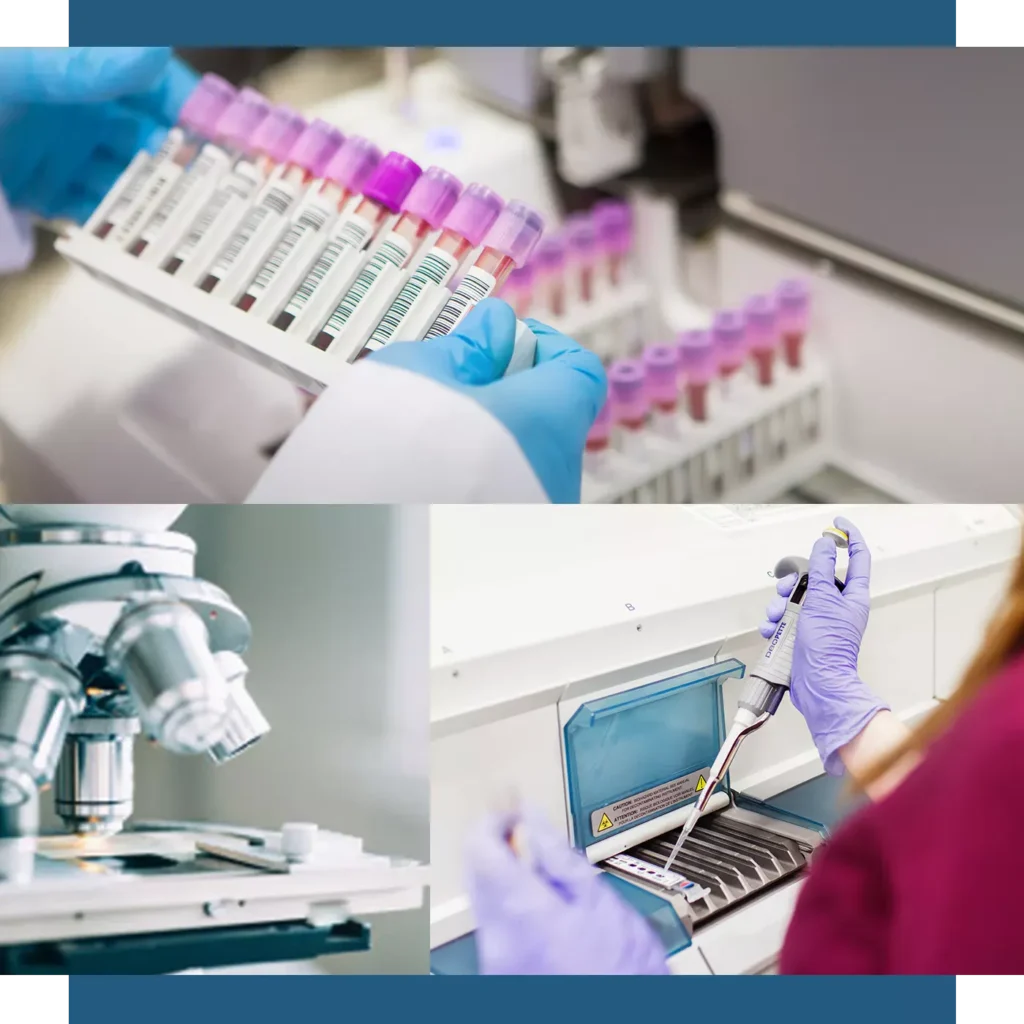Intracytoplasmic sperm injection (ICSI)

ICSI – or Intra Cytoplasmic Sperm Injection – is also called microinsemination in Danish. It is an advanced form of IVF treatment, which is used, among other things, if the sperm quality is severely reduced or there have been very few fertilized eggs in previous treatments with ordinary IVF.
A microinsemination takes place by the woman having her eggs removed, after which they are each fertilized with a single selected sperm cell under a microscope. After the injection, the eggs are placed in a so-called incubator, where they are allowed to develop, and two days later you can see in the laboratory whether there are fertilized and divided eggs. If there is, a fertilized blastocyst can be placed in the uterus, which can hopefully develop into a pregnancy.
It is the single sperm injection that makes the ICSI method different from traditional IVF treatment, where several thousand sperm are added to each egg.
When is microinsemination used?
The ICSI method has been used since 1992, and it is generally used if:
- the man’s sperm quality is greatly reduced (if there are few live sperm and/or mobile sperm)
- the sperm is removed from the testicles (TESA)
- very few or no eggs have been fertilized in previous IVF treatments.

New sperm purification system may increase the chance of pregnancy
As the only clinic in Denmark, Danfert & Stork Fertility offers MACS ARTS, which is a purification system used to remove sperm cells with damaged DNA.
The genetic quality of sperm is one of the factors that play a role in a successful pregnancy, but sperm can in some cases have a so-called DNA fragmentation – i.e. an error in the DNA chain – which means that they cannot lead to pregnancy .
DNA fragmentation is a major challenge in fertility treatment, which is attempted to be treated with lifestyle changes, smoking cessation, weight loss, exercise, vitamin and mineral supplements and the like. However, it is a slow process, where it takes 4-6 months before there is a possibility of an improved sperm quality, and it therefore puts fertility treatment on hold for many couples as well as singles.
At Danfert & Stork Fertility, we can use the MACS ART Annexin V Microbeads system to remove the sperm cells that have a high proportion of fragmented DNA (elevated DFI index), as well as the sperm cells that are on the way to apoptosis – i.e. cell death. The method is used immediately before fertilization of the woman’s egg, and studies have shown an increased pregnancy rate of 3-5% with IVF treatment and up to 15% with ICSI treatment.
The method is primarily used for people who have gone through a longer fertility course with several treatments without pregnancy.
Overview: How an ICSI treatment takes place
1. The woman receives hormone treatment
In both ICSI and IVF treatment, it is important to have several mature eggs to work with. The woman therefore receives hormone treatment to mature several eggs at the same time.
2. The woman has an egg retrieval
When the eggs are ripe, they must be taken out. It is an intervention that takes approx. 20 min., during which the eggs are removed using ultrasound and a fine needle, which is inserted into the ovary. Immediately after egg collection, the eggs are taken to the laboratory, where they are prepared for use.
3. The man submits a sperm sample
Around the same time as the egg retrieval takes place, the man must submit a sperm sample. The sperm cells are then sent for purification in the laboratory to obtain as many good quality sperm cells as possible.
If it is donor sperm, this will be thawed instead.
4. Fertilization and cultivation of eggs in the IVF laboratory
In the laboratory, the best sperm cells are selected, which are introduced individually into each egg. This is done under a microscope with a glass needle.
After fertilization, the eggs are placed in an incubator – a type of heating box or hatching box – and the next day the laboratory can see how many of the eggs have been fertilized. The eggs lie in the incubator for up to 5-6 days, where the further development of the embryo is closely monitored.
5. Laying of fertilized eggs
The last step in the ICSI treatment is the placement of the fertilized egg in the uterus. As a rule, we only place one fertilized egg at a time to reduce the risk of multiple pregnancy.
The implantation takes only a few minutes, and the fertilized egg must then attach itself to the uterine lining and continue to develop from there. After approx. After 14 days, the woman can take a pregnancy test.
Are there risks with microinsemination?
As with all other types of intervention, there can be risks associated with an ICSI treatment, and a doctor will review them all in a personal interview before we start a course of treatment.
Some women, for example, react more strongly than expected to hormone treatment and therefore form many follicles. The symptoms of this include a bloated stomach and pain as well as mild nausea and shortness of breath – all symptoms should disappear within a few days.
During egg retrieval, there is a risk that organs may be inadvertently damaged or that bleeding may occur. In addition, after egg retrieval there is a risk of infection, which will manifest itself in fever, pain or foul-smelling discharge.
At TDanfert & Stork Fertility, we are very focused on minimizing all risks associated with IVF and ICSI treatment.
What is the chance of pregnancy with ICSI treatment?
The chance of getting pregnant with the help of an ICSI treatment largely depends on the woman’s age. In women who are between 30-39 years old, approx. every third treatment cycle in a pregnancy.
